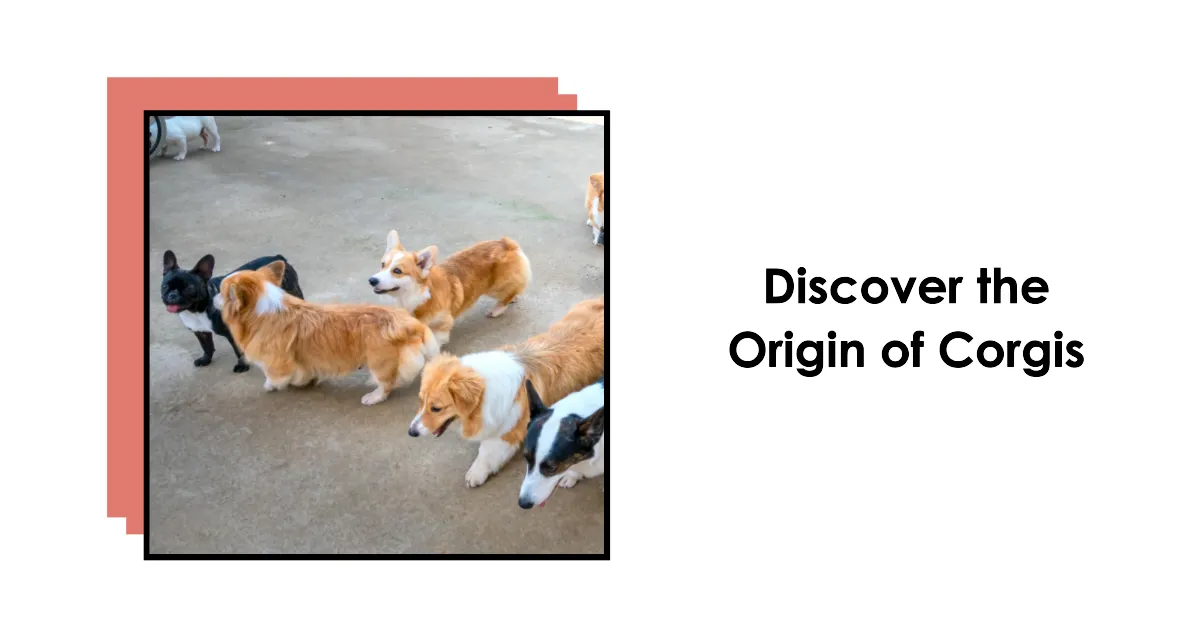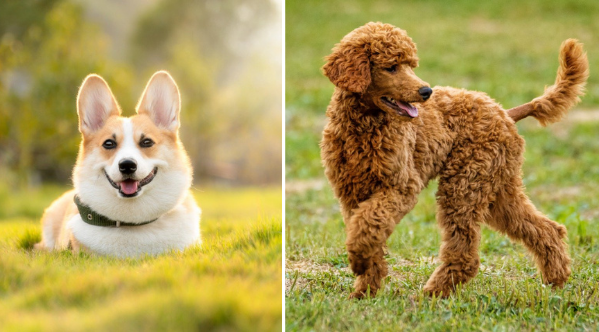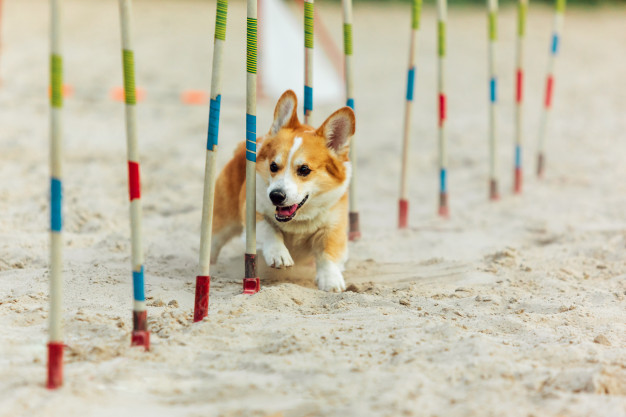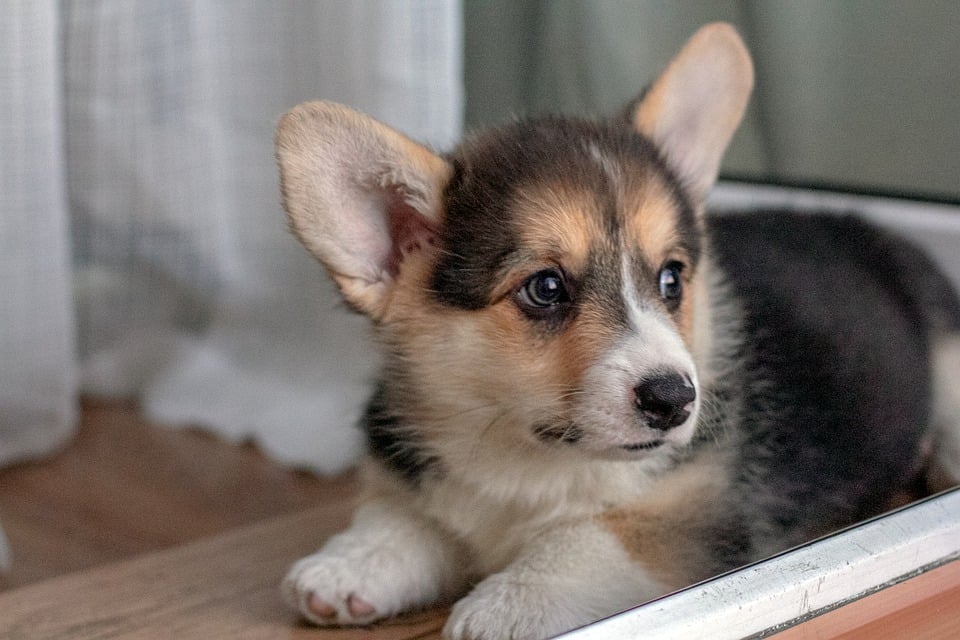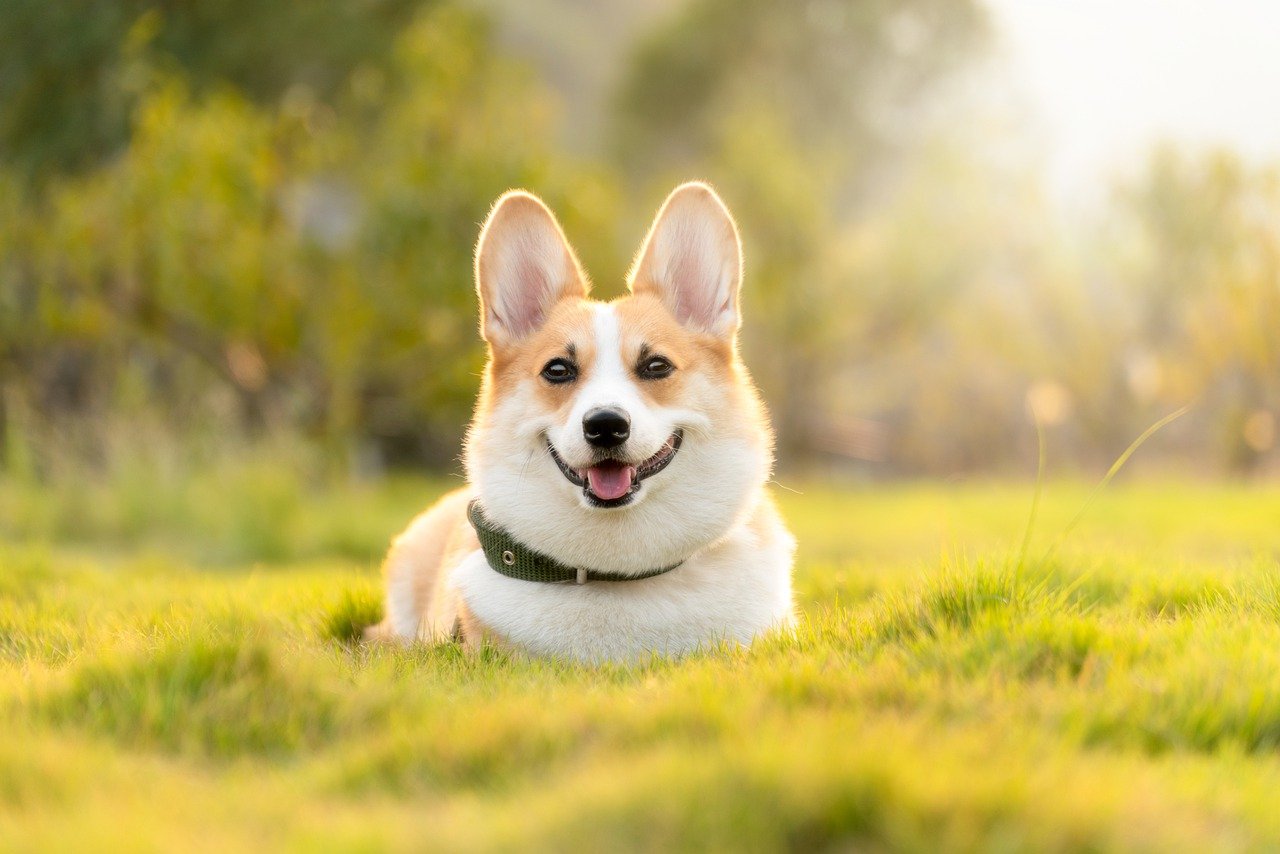Deciphering the Wag: Corgi Tail Talk
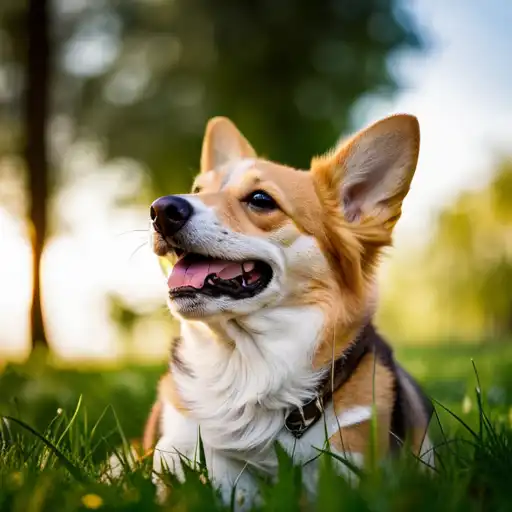
Do you ever wonder what your corgi is trying to tell you with their wagging tail? Understanding your furry friend's tail talk is not only fascinating, but it can also help ensure your safety and the safety of those around you.
Welcome to 'Deciphering the Wag: Corgi Tail Talk' - the ultimate guide to decoding your corgi's tail language. In this informative and engaging read, you will learn about the different types of corgi tail wags, how to interpret their tail positions, and what their tail talk signals when they are happy, fearful, or displaying aggression.
By mastering the art of corgi tail communication, you will strengthen the bond with your beloved pet and create a safer environment for everyone involved.
The Importance of Corgi Tail Language
You frequently need to pay attention to corgi tail language as it's an important means of communication. Understanding your corgi's tail can provide valuable insights into their emotions and intentions.
Corgis use their tails to convey a wide range of emotions, from happiness and excitement to fear and anxiety. By interpreting their tail language, you can better understand how your corgi is feeling and respond accordingly.
A wagging tail, for example, can indicate happiness and friendliness, while a stiff and lowered tail may signal fear or aggression. It's crucial to pay attention to the position, speed, and direction of the tail wag.
Different Types of Corgi Tail Wags
To understand the various types of corgi tail wags, it's essential to observe the positioning, speed, and direction of the wag. By interpreting tail movements, you can gain insights into your corgi's emotions and intentions.
Here are three common types of corgi tail wags and what they mean:
- High and fast wag: When your corgi's tail is held high and wagging rapidly, it indicates excitement and happiness. Your furry friend is thrilled to see you or engage in play. This wag is a positive sign and shows that your corgi is enjoying the moment.
- Low and slow wag: A corgi with a low and slow wagging tail is expressing caution or uncertainty. It could mean your corgi is feeling anxious, unsure, or even fearful. Approach with care and try to identify the source of their discomfort.
- Tail tucked between legs: If your corgi's tail is tucked between their legs, it signals submission or fear. Your corgi may be feeling intimidated or overwhelmed. Provide reassurance and create a safe environment for them.
Understanding Corgi Tail Positions
There are three main positions that a corgi's tail can be in, each indicating a different emotion or state of mind. Understanding these tail positions is crucial in deciphering your corgi's behavior and ensuring their safety.
The first position is when the tail is held high and wagging vigorously. This signifies excitement and happiness. It's a sign that your corgi is in a playful mood and ready for some fun.
The second position is when the tail is held horizontally, neither too high nor too low. This indicates a calm and content state of mind. Your corgi is relaxed and comfortable in their environment.
The third position is when the tail is tucked between the hind legs. This is a sign of fear or anxiety. It's important to address the cause of their distress and provide them with reassurance and support.
Corgi Tail Talk: Happy and Excited
When your corgi's tail is held high and wagging vigorously, it signifies a high level of excitement and happiness. Understanding your corgi's tail language is crucial for ensuring their safety and well-being. Here are three key things to know about corgi tail wagging:
- Speed: The faster the wag, the more excited your corgi is. A rapid wagging motion indicates sheer delight and anticipation. Make sure to provide a safe and stimulating environment to keep your furry friend happy.
- Height: A raised tail means your corgi is alert and engaged. They're ready to explore and interact with their surroundings. Keep an eye out for any potential hazards or triggers that could overexcite them.
- Fullness: A full, wide wag shows pure joy and contentment. Your corgi is experiencing sheer bliss and is in a playful mood. Take this as an opportunity to engage in fun activities and strengthen your bond.
Corgi Tail Talk: Fearful and Anxious
If you've ever noticed your corgi's tail tucked between their legs, it's a clear sign that they're feeling fearful or anxious. Understanding your corgi's tail language can help you address their emotions and provide the necessary support.
In addition to paying attention to the position of their tail, there are various calming techniques you can use to help alleviate their anxiety and make them feel more secure.
Tail Position Meaning
To understand a Corgi's tail position meaning when they're feeling fearful and anxious, pay attention to the position of their tail in relation to their body. The way a Corgi holds its tail can give you insight into their emotional state. Here's what you should look out for:
- Tucked tail: When a Corgi tucks its tail tightly between its hind legs, it's a clear sign of fear and anxiety. This position indicates that the dog is feeling threatened and vulnerable.
- Low-hanging tail: If you notice that your Corgi's tail is hanging low and close to the ground, it could mean that they're feeling uneasy or stressed. This tail position suggests a sense of caution and wariness.
- Wagging tail held low: While tail wagging is often associated with happiness, a Corgi with a low-held wagging tail may be showing signs of fear or anxiety. It's important to approach such a dog with caution and give them space to feel safe.
Calming Techniques for Anxiety
To help calm a Corgi experiencing fear and anxiety, you can implement various techniques while considering their tail language. Understanding a dog's tail language is crucial, not only for Corgis but also for other dog breeds.
When a Corgi is anxious or fearful, their tail may be tucked tightly between their hind legs, indicating their distress. To alleviate their anxiety, you can try using calming techniques such as providing a safe and quiet space, using positive reinforcement, and engaging in gentle physical touch.
Creating a calm environment with soothing music or aromatherapy can also help. Remember to be patient, as it may take time for your Corgi to relax.
Corgi Tail Talk: Aggression and Warning Signs
Identify the five aggression and warning signs exhibited by corgis through their tail talk:
- Low and stiff tail: When a corgi's tail is held low and stiff, it's a clear sign of aggression. This posture indicates that the dog is ready to defend itself or attack if necessary.
- Rapid tail wagging with a stiff body: If you notice your corgi wagging its tail rapidly while its body remains stiff, it could be a warning sign of aggression. This combination shows that the dog is feeling threatened and may lash out.
- Slow and deliberate tail wagging: A corgi with a slow and deliberate tail wag may be displaying dominance or asserting its territory. This behavior can escalate into aggression if the perceived threat continues.
- Tail held high and rigid: When a corgi's tail is held high and rigid, it's a sign of alertness or excitement. However, if accompanied by other signs like growling or bared teeth, it could indicate aggression.
- Tail tucked between legs: A corgi with its tail tucked between its legs is displaying fear or submission. It's important to approach with caution and use calming techniques to alleviate anxiety.
Understanding these aggression and warning signs exhibited by corgis through their tail talk can help you ensure the safety of both your corgi and those around them.
Tips for Communicating With Your Corgi's Tail
When communicating with your corgi's tail, it's important to understand its various movements and what they signify. Decoding tail language is crucial for effective communication and ensuring your safety. Here are some tips to help you communicate better with your corgi's tail.
First, pay attention to the speed and intensity of the wag. A fast, vigorous wag usually indicates excitement and happiness, while a slow, low wag could indicate caution or nervousness.
Additionally, take note of the position of the tail. A high, raised tail signifies confidence, while a tucked tail could mean fear or submission.
Lastly, observe the direction of the wag. A wag that's directed towards the right usually indicates a positive emotion, while a wag directed towards the left could indicate anxiety or stress.
Frequently Asked Questions
How Long Should a Corgi's Tail Be?
Your corgi's tail should be left natural, as the corgi tail docking controversy raises concerns about the procedure. While there are no specific length standards, a longer tail allows for better communication and balance.
Can Corgis Communicate Without Wagging Their Tails?
Corgis can communicate without wagging their tails. Their non-verbal cues and body language play a crucial role in their communication. Understanding these cues is important for your safety and building a strong bond with your furry friend.
What Are the Common Misconceptions About Corgi Tail Language?
Common misconceptions about corgi tail language include thinking that a wagging tail always means happiness and that tail docking is purely cosmetic. It's important to understand the true meaning of their wag and prioritize their well-being.
Are There Any Medical Conditions That Can Affect a Corgi's Tail Wagging?
Medical conditions can affect a corgi's tail wagging. It's important to understand that certain illnesses or injuries can cause changes in their tail movement. Regular vet check-ups and proper tail length measurements can help ensure your pup's wag is healthy and happy.
How Can I Train My Corgi to Understand and Respond to Tail Language Cues?
To train your corgi to understand and respond to tail language cues, try using positive reinforcement techniques. Observe their tail movements closely and reward appropriate responses. This will create a strong bond and ensure safety for both you and your furry friend.

